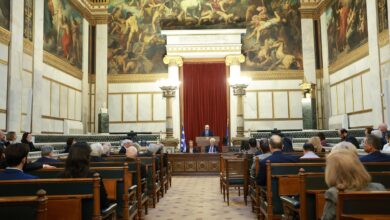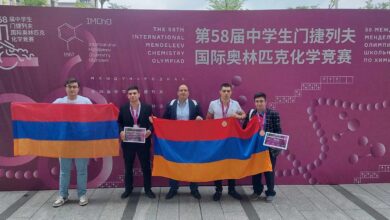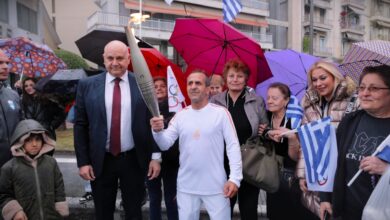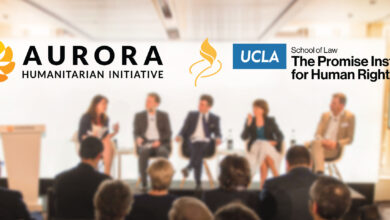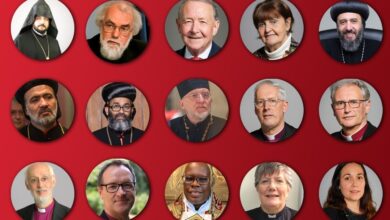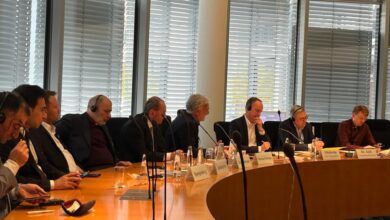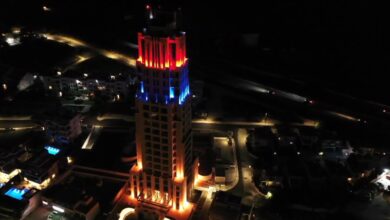Armenian Genocide monument unveiled at Fresno State – Video
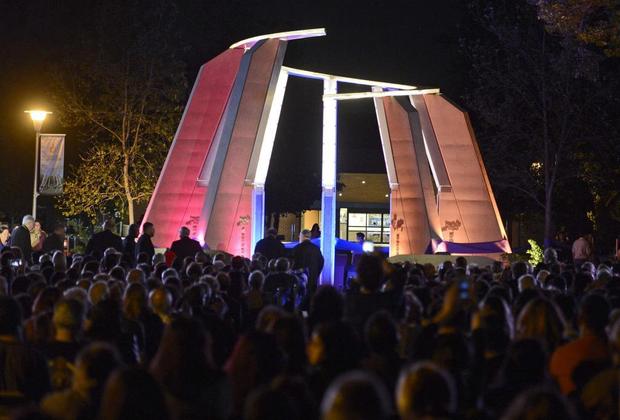
More than an estimated 4,000 people crowded Fresno State’s Maple Mall on Thursday night for a somber ceremony to unveil the Armenian Genocide Centennial Monument, the Fresno Bee reports.
“I’m very sad, very sad,” said Asadour Boghossiu, one of hundreds of Fresno Armenians who attended the ceremony on the eve of the 100th anniversary of the Armenian genocide. Boghossiu’s father was the sole survivor of seven brothers and four sisters who were killed in the genocide. As many as 1.5 million Armenians are believed to have been killed from 1915 to 1923 by Ottoman Turks.
The stone-and-concrete monument dedicated Thursday consists of nine pillars — six representing historic provinces of the Armenian people, Cilicia (a region of Ottoman Turkey that was home to many Armenians), one representing an estimated 10 million Armenians around the world, and the final representing the modern Republic of Armenia. An incomplete halo rests on top of the pillars, meant to symbolize the damage of the genocide and the unity of the Armenian people. It is the first monument on a U.S. college campus marking the genocide.
“This beautiful monument is one visible action which demonstrates our strong commitment to human rights and justice here in the Valley, in the United States, and throughout the world,” said Fresno State President Joseph Castro.
Consul General of the Republic of Armenia in Los Angeles, Excellency Sergey Sarkisov, said a number of governments, including the United States, still don’t officially recognize the Armenian genocide. By refusing to do so, he said, “it’s an assault not only on Armenians, but on history. It’s an assault on truth. It’s an assault on justice. And it’s an assault on humanity itself.”
A number of elected officials and religious leaders from Fresno and the Valley attended the ceremony.
“We appreciate the incredible contributions of the Armenian people in Fresno and we all stand together in solidarity and in support of the Armenian people,” said Fresno Mayor Ashley Swearengin after the ceremony. “Tonight was a very special time to do that.”
Fresno residents Charity and Joel Rockey attended the ceremony to support their many Armenian friends.
After hearing about the hundreds of thousands of Armenians killed in the genocide, Charity said, “It made you think, how did all this get swept under the rug or missed? It’s sobering.”
Joel added, “I’m thankful that our city and local governments are starting to recognize it as the genocide and giving it the remembrance that it was due.”
A few videos were shown during the ceremony that highlighted how many Armenians were killed in each province during the genocide, and there were reflections from local leaders.
During the film spotlighting the genocide’s toll on each Armenian province, a narrator described Bitlis, home of the family of famed dramatist and author William Saroyan, whose family immigrated to Fresno. “On the eve of the genocide, Bitlis had 198,000 Armenians. After the genocide, it had none.”
Rabbi Rick Winer of Temple Beth Israel in Fresno said the Jewish and Armenian communities share the “scar” of genocide.
“One of the lessons we learned from having lived through such difficult tragedies is that we can survive and we can lift up,” Winer said. “We can take the scar we bear and have it serve as an emblem that we are survivors in a difficult world, but a world that still blooms. … Out of the ashes we create beautiful communities, beautiful culture, and what we have here in this community is a beautiful example of that.”
Earlier on Thursday, a large crowd watched as Santa Clara Street between O Street and Van Ness Avenue in downtown Fresno was officially renamed Armenia Street to commemorate the Armenian heritage of the area and its influence on Fresno.
Later in the afternoon, about 100 Fresno-area Armenians gathered at Ararat Cemetery for a special service to remember those who died during the genocide.



